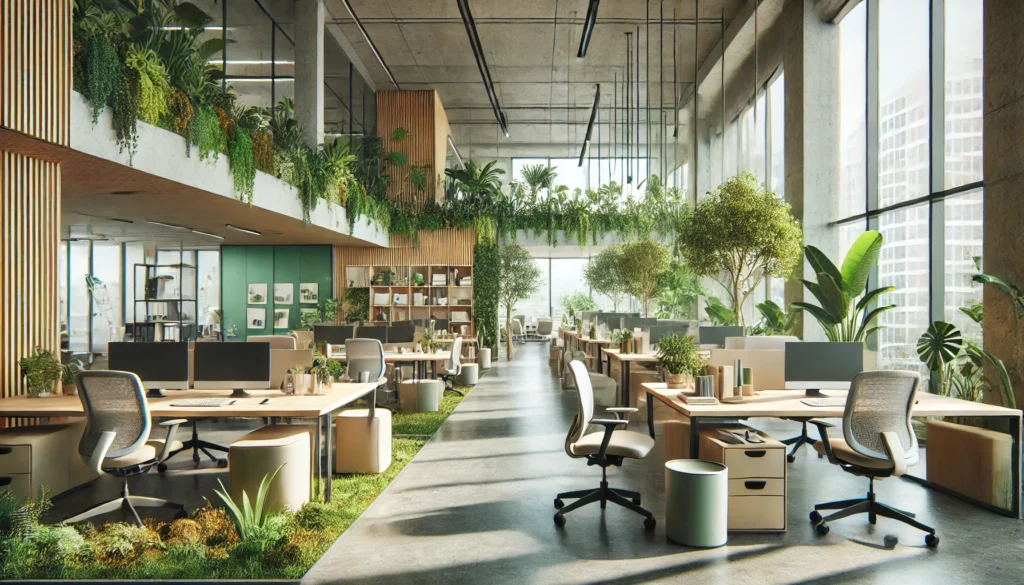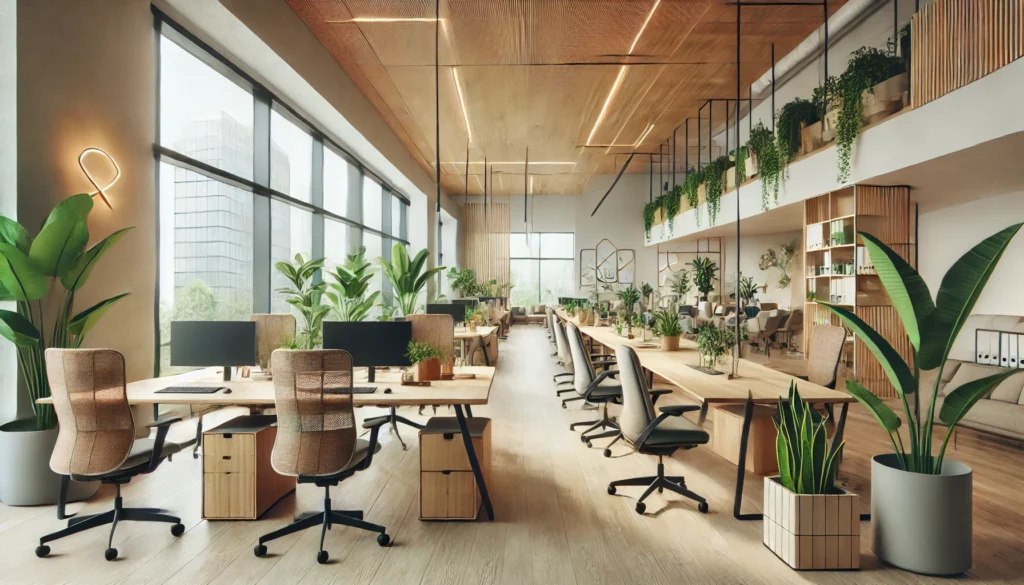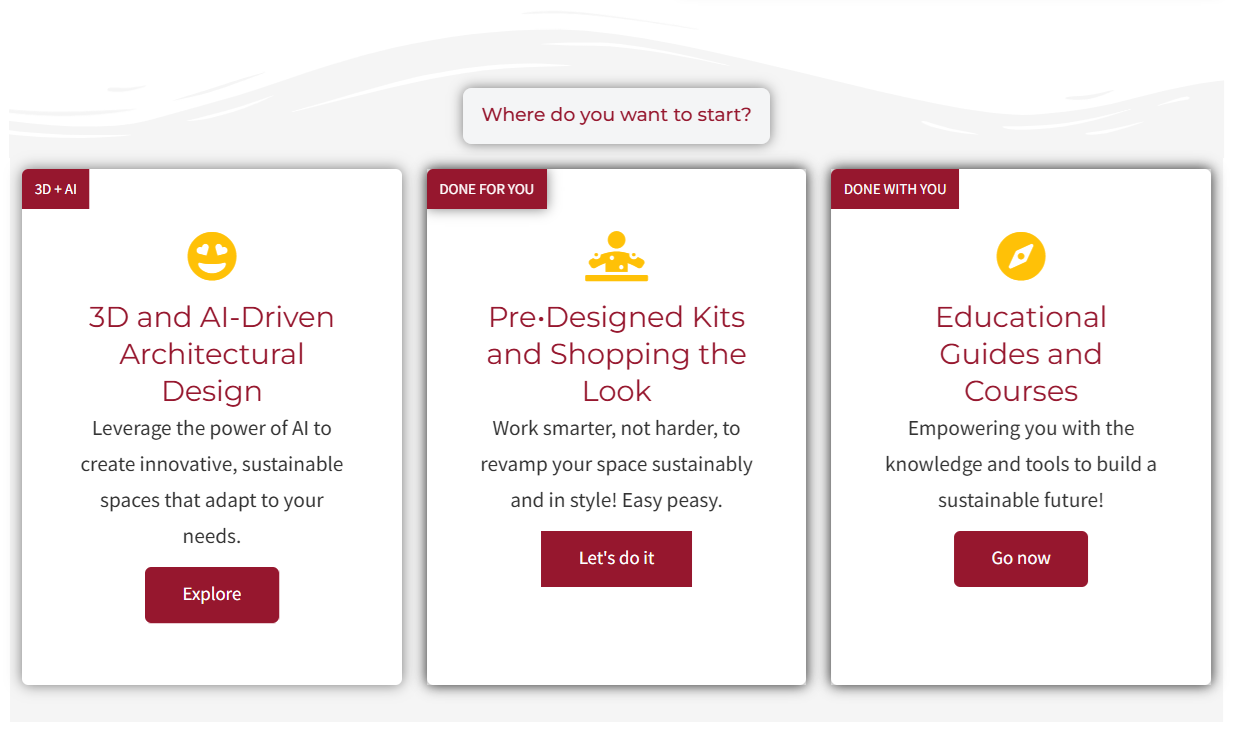Sustainable office design focuses on natural elements, energy efficiency, and flexible spaces. Enhance well-being while reducing your environmental impact.
Embracing Nature in the Workplace
Sustainable office design begins with integrating natural elements into the workspace. By maximizing natural light, you can significantly reduce the need for artificial lighting, cutting down on energy usage. Large windows and open spaces allow sunlight to flood in, creating a bright, uplifting environment that enhances productivity and well-being.
Incorporating natural materials like wood, stone, and bamboo not only contributes to an eco-friendly aesthetic but also supports sustainable sourcing practices. These materials are durable and have a lower environmental impact compared to synthetic alternatives. Indoor plants are another simple yet powerful addition. They improve air quality, reduce stress, and bring a touch of nature indoors, making the office a more pleasant place to work.
Energy Efficiency and Resource Conservation
Energy efficiency is a cornerstone of sustainable office design. Modern offices can implement a range of technologies to reduce energy consumption and minimize waste. LED lighting, for example, is not only more energy-efficient than traditional bulbs but also lasts longer, reducing the frequency of replacements.
Smart thermostats and energy management systems help optimize heating and cooling, ensuring that energy is used only when needed. Additionally, the use of energy-efficient appliances and office equipment can further reduce the office’s carbon footprint. For example, choosing computers, printers, and other devices with Energy Star ratings can lead to significant energy savings over time.
Water conservation is another crucial aspect. Installing low-flow faucets and toilets, along with water-efficient landscaping, can drastically cut water usage. Offices can also implement recycling and composting programs to manage waste more sustainably. By reducing, reusing, and recycling materials, businesses can decrease their environmental impact and contribute to a circular economy.

Designing for Flexibility and Health
A sustainable office is not only about environmental responsibility, but also about creating a space that promotes health and flexibility. Ergonomic furniture is essential for maintaining employee comfort and well-being, reducing the risk of injuries and promoting better posture.
Flexible workspaces that can easily adapt to different tasks and needs are a key feature of sustainable design. Open-plan offices with movable partitions, modular furniture, and multipurpose areas allow teams to collaborate more effectively while still providing spaces for individual work and privacy when required.
Healthy work environments are also crucial. Good indoor air quality, natural light, and access to outdoor spaces all contribute to a healthier, more enjoyable workplace. Some offices are even incorporating biophilic design principles, which involve connecting occupants more closely with nature. This can include features like living walls, natural ventilation, and the use of organic materials.
Sustainable office design is not just about creating an eco-friendly space—it’s about fostering a healthier, more productive, and adaptable work environment that benefits both people and the planet.
Conclusion
Sustainable office design is more than just a trend—it’s a commitment to creating a healthier, more efficient, and environmentally responsible workspace. By embracing natural elements, prioritizing energy efficiency, and designing flexible, health-focused environments, businesses can make a positive impact on both their employees and the planet. Investing in sustainability today sets the stage for a more resilient and prosperous future.
Ready to transform your office?
Start implementing sustainable design practices in your workspace today and make a lasting impact on your team’s well-being and the environment. Begin your journey toward a greener, more productive office today!


